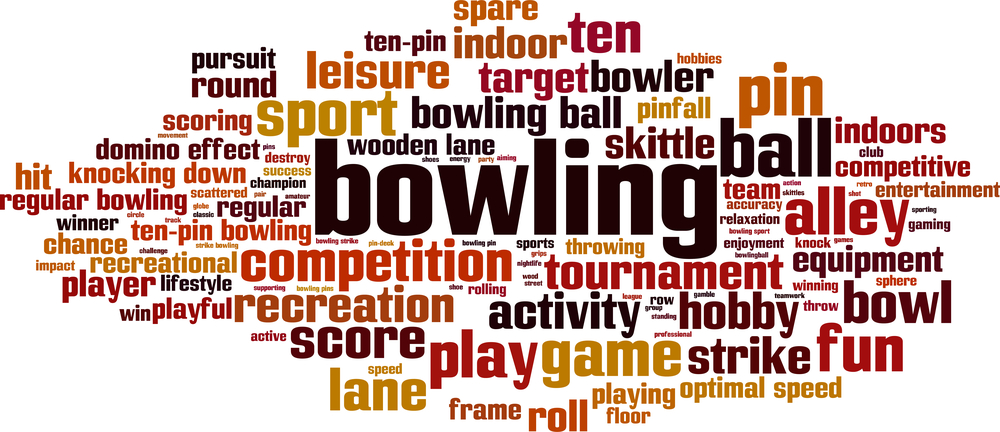
Anyone interested in learning more about bowling is often surprised by the number of unique terms and phrases that come along with the sport. The language used can seem foreign and complex depending on your basic understanding of the sport. Luckily, this guide is here to help you parse through it all.
Contents
Common Bowling Terms and Phrases
While working on your form and throw, it’s a good idea to familiarize yourself with bowling-specific terms and definitions. Here’s a nearly comprehensive list to help you figure some of these terms out and grow your knowledge. It’s a good idea to bookmark this page, print it out, or keep it open on your mobile device.
You’ll want quick access to it, especially whenever you spend time at the bowling alley.
Bowling Terms for Beginners
Whether you’re brand new to bowling or just interested in learning some more details about the game, here are some basic terms to help you build your knowledge bank.
- Ball Rack: This refers to the area where you'd place your ball after you've chosen it. It is also the place where you'd pick your ball up before each turn and where your ball returns after each throw or roll. Ball rack can also refer to the area in the bowling alley where the bowling balls are stored. Typically near the lanes.
- Bowling Ball: This is the ball players use to roll down the lane and knock pins over. Most bowling balls have three holes drilled into them and come in various weights and coverstocks. Most balls weigh between 6 and 16 pounds and are appropriate to use at any alley.
- Bowling For Beginners: An online blog run by content publisher, Kira Byrd. She's an avid bowler and enjoys sharing her knowledge of bowling with others.
- Bumpers: Bowling bumpers are metal or plastic gutter coverings or rails that pop up on the side of your lane. They prevent your ball from going into the gutter
- Foul Line: As you approach the bowling lane, you will see a horizontal line on the floor at the beginning of it from gutter to gutter. This is the foul line. You never want to touch or cross that line, as your points for that throw won’t count.
- Gutters: The grooves that look like little long ditches on either side of a bowling lane are called a gutter. Bowlers want to avoid getting their ball in the gutter because their throw will count, but they won’t get any points.
- Perfect Game: A perfect game occurs when a player knocks down all of the pins (also known as a strike) on every turn of their game. This score is the highest in bowling, also known as a perfect score, which is 300.
- Pins: The objects you want to knock down at the end of the bowling lane are called pins. Ten of them are placed 60 feet beyond the foul line.
- Spare: If a bowler can knock down all of the pins within two throws, they will have bowled a spare.
- Strike: When you knock down all the pins with your first throw of the frame, you have bowled a strike. This will earn you the maximum number of points.
Some terms you may already know, but if not, this page is for you.
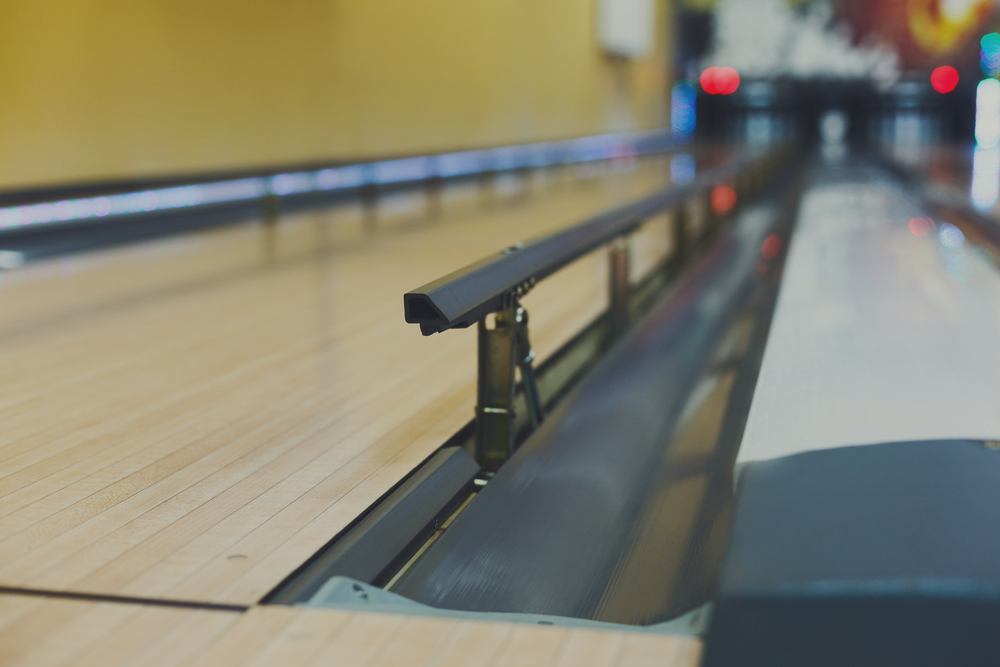
Common Bowling Terms
Once a person moves past the basic understanding of a bowling game, it’s time to learn about all other terms, definitions, and aspects that make up a bowling experience. This list is extensive but by no means a definitive list of common bowling terms and definitions:
A
- Action: The ball’s spin, flying pins, or one-on-one bowling for money.
- Address: The stance or position of a bowler before they begin to approach the lane.
- Adjustment: When a player changes their in-game tactics, including a realignment or equipment change. This can also include changes in a player’s mental or physical game.
- Anchor: The last player to bowl in a team - typically the best player on the team.
- Approach: How you get to the foul line to throw your ball.
- Area: When a player is able to hit multiple boards and still hit the pocket.
- Arm Swing: The motion of a player’s arm from the first movement through the release.
- Arrows: The triangles on the bowling lane that assist bowlers in aiming their shot.
- Axis: When the ball is released, the axis is the beginning of the ball’s rotation.
- Axis Tilt: This refers to the direction your ball’s axis faces upon release. The less axis tilt a ball has, the sooner it will move into a roll. A higher axis tilt will often result in more skid.
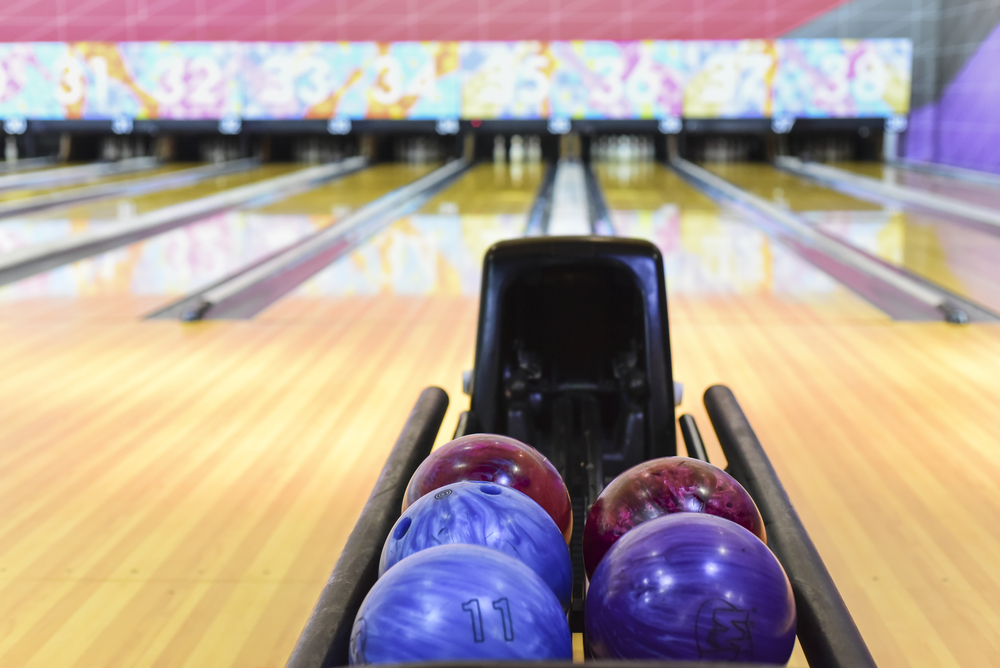
B
- Baby Split: These splits, 2-7 or 3-10, are considered baby splits because they are seen as easier to pick up over any other type of split.
- Back Ends: This is where a player should see the most hook for their throw.
- Backup Ball: A shot that goes from left to right for a right-handed bowler, or right to left for a left-handed bowler.
- Bad Rack: Refers to pins not adequately positioned at the end of the lane.
- Bagger: A series of strikes. For example, five strikes in a row can be referred to as a Five Bagger.
- Baker Game or System: A type of team play in which all players contribute to the score in one game. The player designated as #1 bowls frames 1 and 6, the #2 player bowls frames 2 and 7, the #3 player bowls frames 3 and 8, the #4 player bowls frames 4 and 9, and player #5 bowls frames 5 and 10.
- Balance (for a ball): Refers to the weight distribution in a bowling ball.
- Balance during a release: When a player is able to stay on their feet with shifting during the release of the ball, they are considered to have good balance.
- Balance Hole: When a ball is too heavy on one side or the other, a hole can be drilled to bring it back into USBC compliance.
- Ball Return: This is the machine that brings your ball back up the ramp to you after delivery.
- Ball Spinner: The ball spinner spins a bowling ball for ease of sanding or polishing.
- Ball Track: The area where the ball rolls down the lane. It tends to be where most balls are thrown over several games.
- Beak: The center of the headpin, also known as the nose.
- Bed Posts: Another term for the 7-10 split.
- Belly the Ball: When a player throws their ball standing on the inside while sending the ball to the outside. This is in hopes of seeing it swing back into the pocket to get a strike.
- Big Four: The 4-6-7-10 split.
- Blind Score: When a team member can’t make it to the lane, they are given a place setting score called a blind score, which is their average score. This will be used in calculating the team’s total for each game.
- Blocked Lane: When lane conditions seem to promote high scores due to its finish.
- Blow: When a player’s ball misses their target and doesn’t get a spare. This does not apply to splits.
- Board: The wood that makes up the 39 slats on the lanes.
- Body English: Any movements of the body as a means to guide the ball as it moves down the lane.
- Boomer: Used to describe a ball with a big hook or a player that threw a ball with a big hook.
- Bottom Weight: This refers to the balance of weight distribution in a bowling ball.
- Bowl Out: When a team player is allowed to finish their game by playing beyond their normal turn due to time limitations. This is more of a courtesy option. Leagues and tournaments typically do not allow this practice.
- Break Point: When the bowling ball breaks from its path to hook towards the pocket, that spot is called the breakpoint.
- Brooklyn: Used to describe when a ball moves from the side it was thrown onto the other side of the lane.
- Bucket: This refers to a diamond-shaped cluster of pins such as the 2-4-5-8.
C
- Carry Down: The amount of oil on a lane that is moved or carried down with each play. It isn’t possible to see any carry down oil with the naked eye, but you can learn to assess it by how your ball moves on the lane.
- Center of Gravity: The heaviest part of a bowling ball. You can see a mark often put on the ball by the manufacturer that indicates the center of the weight mass relative to the top of the ball.
- Channel or Gutter: The small ditches that run alongside a bowling lane.
- Cherry: When a bowler is able to knock down the front pin or pins.
- Chop: This happens when a bowler knocks down a single pin of a spare while leaving the one next to or behind it standing.
- Christmas Tree: This happens when a right-handed player bowls a 3-7-10 split or a left-handed player bowls a 2-7-10 split.
- Clean Sheet or Clean Game: This is a game without any open frames.
- Closed Pocket: When the head pin is a bit off to your bowling hand. This slight discrepancy can lead to a bowl with little predictability.
- Conditioner: Another name for lane oil.
- Conventional Grip: When ball holes are drilled to where the fingers can be inserted up to their second joint. This type of grip typically isn’t used by pros as it doesn’t lend itself well to hooking.
- Count: The number of pins knocked down for a spare or strike in the next frame.
- Coverstock: The material that covers the outside of your bowling ball. The three main coverstock types are polyester, urethane, and reactive resin.
D
- Deadwood: Any pin that went onto the lane or in the gutter after being knocked down.
- Deuce: A game with a score of 200 or more points.
- Dots: These are seven spots on the lane beyond the foul line before the arrows. Dots can help with alignment and targeting. Bowlers also use the dots to guide their approach.
- Double Wood: Refers to two pins where one is directly behind the other.
- Down and In: This is used to describe a line that is straight and just about parallel to the lane's boards.
- Dressing: When oil is applied to the lane, it’s called dressing.
- Drift: When a bowler moves towards the foul line in a different way every time, there’s said to be drift in their approach.
- Dutch 200: When you score a game of exactly 200 points exclusively with strikes and spares alternating throughout the game, it can be called a Dutch 200.
E
- Early Timing: When you release the ball before your foot stops sliding. This can result in a weak throw with less hook than intended.
- Entry Angle: The direction of a bowling ball at the point that it turns and goes toward the pins.
F
- Fall Back Shot: A shot that begins at the opposite side of the typical pocket before drifting back into the pocket.
- Fast Eight: Used to describe a good pocket hit that only knocks down 8 pins.
- Fifth Arrow: This is on the 25th board from the right for a right-handed player.
- Fill Ball: Used to describe a ball thrown after a player gets a spare in the 10th frame.
- Finger Grips: These grips are inserts that can be put into the holes of a bowling ball for better grip and control.
- Finger Weight: When finger holes are drilled into a ball to be closer to the ball's label than the thumbhole.
- Fingertip: A kind of grip where the fingers are only inserted into the ball up to the first joint. This style is known to help get more spin on a ball.
- First Arrow: This is on the fifth board and is the farthest to the right for a bowler.
- Flat: Refers to a ball that ends up having a weak roll and hit.
- Flat Gutter: Flat gutters are on either side of the pin deck. While regular gutters have a well, the flat gutters are flat, just like the name states. The USBC regulates the proper height of these gutters.
- Flush: When a player throws a firm and targeted ball in the pocket.
- Foul Line: This is a horizontal line where the approach and the lane meet. It is usually red, and is placed 60 feet from the headpin. It is represented by an "F" on the score board if crossed.
- Foundation Frame: This refers to the 9th frame.
- Frame: An entire game is divided into ten turns, and each turn is called a frame. Frames 1-9 give bowlers two chances to throw, while the 10th frame allows for up to three.
- Full Roller: This is a ball that rotates or rolls over its full girth. This kind of ball is rarely used because getting good power, and a hook is challenging.
G
- Greek Church: This can refer to any split that leaves three pins on one side of the lane and two on the other.
- Gutter Ball: A ball that rolls into the gutter without striking any pins.
H
- Half Ten: Also known as a weak 10, this refers to a 10-pin that remains standing with the 6-pin down in front of it.
- Handicap: This provides players with a score adjustment to even the playing field in certain circumstances.
- Heads: The wood at the first section of the lane is referred to as heads. It is often made of sturdy wood to help keep it safe from ball damage.
- Head Pin: The 1-pin, which is closest to the foul line.
- High: Refers to a ball that strikes closer to the center of the headpin. This can often result in a split.
- High Hit: This refers to a ball that has a solid hit toward the front and center of a pin or hits too much of the headpin when trying to score a strike.
- House: The bowling alley.
I
- Inside Lane: Is the area on a lane where the next rolled is on the inside of the previous through. For right handers, the inside, is going inward to the left based on prior roll. For left handers, the next release is more to the right of the previous throw.
J
- Jersey Side/Hit: If a bowler’s ball hits on the opposite side than it usually does, it can be called a Jersey side or hit.
K
- Kegler: The German word for bowler.
- Kickbacks: These are the side boards that stand around the pins and divide the lanes. Pins often hit these kickbacks and then rebound from a strong hit.
- Kindling Wood: Also called light pins, this is used to describe pins that easily fall during a game.
- Kingpin: As the 5-pin is considered crucial in getting a strike, it is sometimes referred to as the kingpin or king pin.
L
- Lane: The playing surface for a game of bowling.
- League: An official and organized competition that happens weekly during bowling season.
- Leave: The pins that are still standing after the first throw of a frame is complete.
- Light Hit: Refers to when a ball hits a pin on its side, sending it sideways.
- Lily: A 5-7-10 split, also referred to as a sour apple.
- Loft: How far a ball travels from the release to the second it makes contact with the lane is called loft.
- Long Oil: If a lane is oiled between 35 to 40 feet or more on the lane, it is considered to have long oil. Long oil can make the game more challenging and unpredictable.
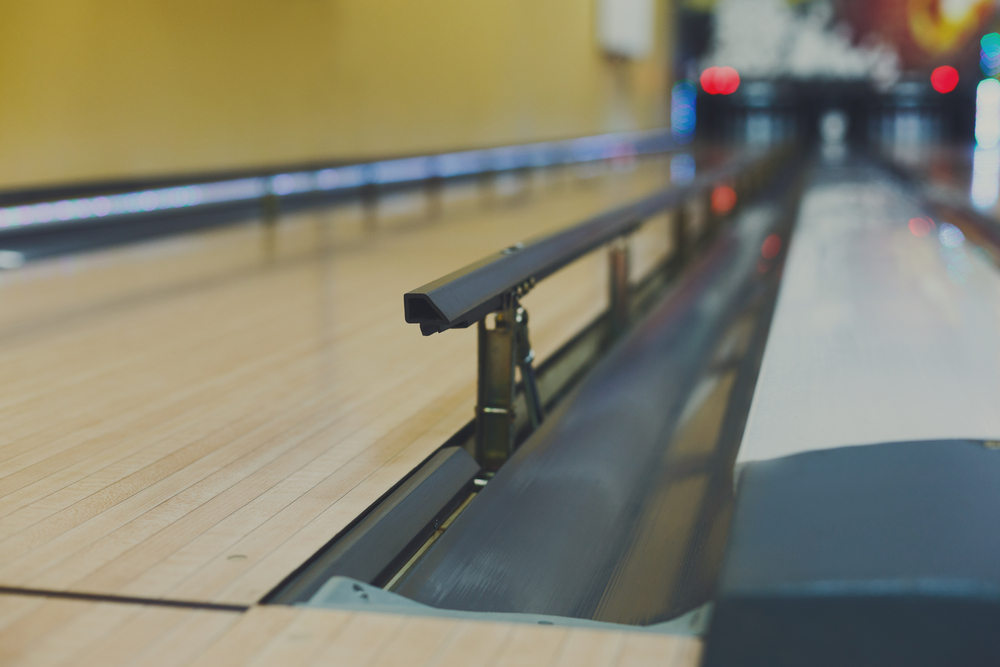
M
- Maple: This is the kind of wood many lanes use at the head of the lane. Most lanes use synthetic wood today, but a few alleys still maintain their maple wood.
- Mass Bias: If you have a ball with a noticeable weight dominance in a single direction, it has mass bias.
- Match Play: Instead of playing as a team, this game allows two bowlers to compete against each other. In some cases, the winner will move on to play another match.
- Messenger: This is the name of the pin that is able to roll across the deck and knock down other pins, sometimes resulting in a strike or a successful split.
- Minus: This is the number of pins that a bowler scores under a 200 average.
- Miss: When a spare is missed. This can also be referred to as a blow, cherry, error, or open.
- Mother-in-Law: Another name for the 7-pin.
N
- Negative Weight: Refers to the weight on a ball that allows it to roll earlier and prolong the hook. Negative weight can be drilled into the ball.
- No-Tap: This is a kind of competition where if a bowler hits nine pins on their first throw, it can be counted as a strike. There can be 8-pin no-tap events, but they are less common.
- Nose Hit: When a bowler hits the pins' dead center.
O
- Open Frame: Any frame without a strike or a spare is called an open frame.
- Open Bowling: Refers to bowling just for fun instead of competition.
- Out of Bounds: When a bowler rolls in an area that can’t move to hit the pocket with its usual break, it can be considered out of bounds.
- Over: This term is used by pro bowlers when their score is over 200. If their score is 234, then it would be 34 over.
P
- Picket Fence: 1-3-4-7 and 1-3-6-10 spares.
- Pin Deck: This is the place where the pins are set.
- Pit: This is the area at the end of the lane behind the pin deck.
- Plus: If a player gets more than 200 points in their game, they can refer to any excess as plus. A player who scored 272 can say that the game is plus 72.
- Pocket: Refers to the ideal place a bowler wants the ball to hit for the best chance of getting a strike. It it between pins 1 and 3 for right handed bowlers and pins 1 and 2 for left handed bowlers.
- Polyester Bowling Ball: refers to the coverstock of a bowling ball that is designed to roll straight. Like a house ball or a bowling ball used to pick up spares.
- Push Away: Mostly used with the four-step approach, it is the action of pushing the ball forward when beginning the swing.
Q
- Quadrupling: When you achieve 4 spares in a row.
R
- Radius of Gyration or RG: This is how fast a ball starts to rotate when released from a bowler’s hand.
- Range Finders: These are markers on the lane that keep help the bowler recognize the target line. The markers are placed as dots and arrows on the lane.
- Reactive Bowling Ball: refers to the coverstock of a bowling ball that is more porous and has more friction for a greater hooking ball.
- Re-Rack: Refers to resetting the pins when a player sees inaccurate settings.
- Revs/Revolutions: This is the number of times the bowling ball rolls over itself when released, usually through the time until it comes into contact with the pins.
- Runway: The area where bowlers stand and approach the foul line to deliver the ball.
S
- Schleifer: This is a German word that means to cut down or slice. It usually refers to a strike where the pins appear to fall down one by one.
- Scratch: The true score from a game without any adjustments or handicaps.
- Six Pack: When a bowler gets six strikes in a row.
- Skid: When the ball slides on the lane after it first comes into contact with the surface is known as a skid. The skid should happen before the ball hooks.
- Sleeper: This refers to a rear pin that is hard to see because of a pin set in front of it.
- Span: The span of a bowling ball is the distance between the thumb and finger holes.
- Spare: When pins remain after the first roll, during the 2nd roll, a player knocks down any pins left standing. A spare is represented by "/" on the scoreboard.
- Sparrow: 3 spares in a row is called a sparrow.
- Split: A split is where a bowler knocks down the pins on their first throw in a way that makes it difficult for them to knock them all down on their second throw. This can be any combination of remaining pins spaced in a manner in which most bowlers can’t hit them all on their second throw.
- Spot Bowling: A bowling method where bowlers use the spots or arrows on the lane as their targets. They focus on these instead of the pins during their throw.
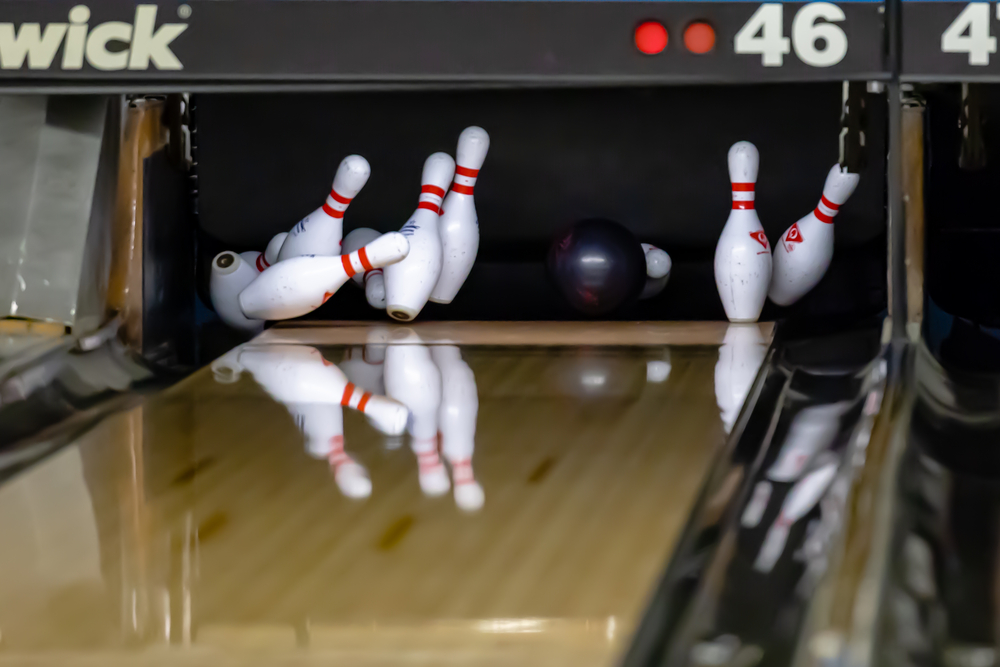
T
- Tap: When what appears to have been a great hit to get a strike leaves one pin left standing.
- Turkey: This is when a player gets three consecutive strikes.
- Three Hundred Game (300): When a bowler plays a perfect game.
- Throwing Rocks: Getting strike after strike when bowling with a fastball.
- Top Weight: The drilling of a hole to make the ball top-heavy.
U
- Urethane Bowling Ball: Refers to the coverstock of bowling balls that doesn't absorb oil as much and offers greater friction between the ball and lane. This friction creates a greater hook than plastic balls.
- USBC: Refers to the United States Bowling Congress, or USBC, which originated in 2005 as the national governing body of bowling. They’re also recognized by the US Olympic Committee. This organization maintains and provides the rules and regulations of bowling.
V
- Vacancy: This is a placeholder score used when a team doesn’t have the same number of players as the other teams. The vacancy score is decided by the league.
- Vent Hole: An extra hole that is supposed to eliminate any suction in the thumb hole.
W
- Washout: Refers to a split that leaves the headpin still standing. While this may be referred to as a split, the headpin makes it a washout.
- Weight Block: This is the block in the center of a bowling ball. It gives it extra weight and can be used to a bowler's advantage with the right weight distribution.
X
- X: An "X" in bowling means strike.
Bowling Phrases
Bowlers are fun people and have some neat phrases that they throw about from time to time. Here is a short list of some of the most common ones:
- 180: This is called when a rack of pins fails to be set. Again, an alley employee should be alerted to rectify the situation.
- Deadwood: This is when a pin gets past the rake and remains on the lane. This is a problem for the control desk at your bowling alley. The alley employees can rectify that situation.
- It's Time to Ball Down: You might hear this phrase when a bowler’s ball hooks too much.
- The Gray Boards Don’t Hook: The gray boards refer to the gutter. It makes sense that if your ball goes to the gray boards, it most definitely won’t be able to hook!
- I Need to Change Soles: Despite the potential to be a pun, there’s no divine intervention needed if you hear this phrase. It simply means that the bowler needs to change the soles of their shoes. You can switch out the soles in specific bowling shoes, which is what the player means with this phrase.
Bowling Games
- 5-Pin Bowling: Just like ten pin bowling, in 5-pin bowling, a strike involves knocking down all of the pins with one throw, and a spare involves clearing all the pins after 2 throws. The pins are arranged in a V-shape, each with its own value.
- 9-Pin Bowling: A game where 9 pins are lined up in a diamond shape. The center pin is known as the “9” pin and is typically red in color. The goal is to get a "Ringer".
- Bocce: This game aims to throw your bocce ball (bigger) closest to the jack or Pallino (which is smaller).
- Lawn Bowling: A bowling game played outdoors on a flat, green lawn. The sport involves rolling biased (not symmetrical) balls (or bowls) toward a target (also called a jack). The objective of the game is to get your bowls as close to the jack as possible.
- Tra or Feather Bowling: This is a variation of lawn bowling from western Belgium/Netherland and Scandinavian communities. The twist is Tra Bowls or Feather bowling has a rolling path that is concaved or curved and hollow in the center.
- Ten Pin Bowling: This is a targeting sport where ten pins in the shape of a triangle are placed at the end of a 60-foot lane of wood or synthetic wood. The goal is to roll a bowling ball to knock down as many of the pins as possible.
Related Articles
This glossary of words and phrases can be helpful when you’re unfamiliar with bowling terms. We hope that you found this article to be helpful, and we wish you the best as you learn more and more about the sport.
Kira Byrd, a Certified Fraud Examiner, holds a B.S. in Accounting from the University of Alabama at Birmingham. With a passion for bowling from her childhood, Kira has poured her expertise and personal experiences into creating and nurturing Bowling For Beginners. Kira's mission is to meet new bowlers where they are and guide them toward consistently achieving higher scores. With a focus on skill development and strategic techniques, she empowers readers to take control of their game and unlock their true potential.
Bowling For Beginners embodies strict editorial integrity, ensuring reliable and unbiased information. Kira's commitment to delivering valuable insights and practical strategies is reflected in every article. Here's an explanation of our editorial policy and how we get money.





